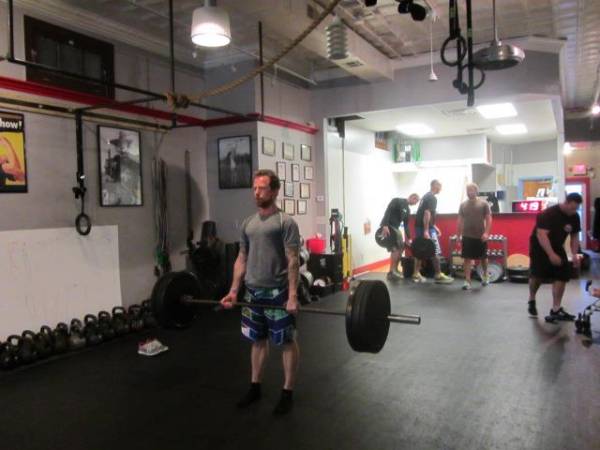Click Here for Richard’s Free Four Weeks to a Faster Mile Workouts
I created RunningWOD in 2011 to present my program for training competitive runners. The methods presented daily have been designed over years of trial and error with myself and the athletes I have coached. The program is simple, with running taking precedence. If you want to be good at running then you need to run. The farther you plan to race the farther you need to run in training. The faster you want to run, the faster you will need to run in some of your training sessions.
With that being said, if running is all you do and you do a lot of it, there’s a good chance you’re going to get hurt. This is because the farther you go, the more fatigued you become. With fatigue comes poor mechanics. This is where technique and strength training come into play. I’ve found that by combining and balancing volume, technique, and strength training that my athletes are able to successfully train at a high volume while remaining injury free and still remain able to improve their performances. (The term ‘volume’ includes all aspects of run training – intervals, tempo and threshold runs, distance runs, and active recovery running.)
The Importance of Technique
Technique is something that all runners can and should be fine-tuning and trying to improve regularly. Most of us have developed poor movement patterns from years and years of training in a weakened state. Unfortunately our heart and lungs develop at a much faster rate then our muscles, ligaments, tendons, and skeleton. Because our engine develops much faster then our chassis, we pick up inefficient mechanics that become permanent before the chassis develops. Eventually as we add more volume to the program, our body will begin to break down from these poor movement patterns.
It is through drilling proper technique that we can correct and improve our mechanics. Technique drills, if done correctly, can be very effective in improving efficiency. Drills are not time consuming and a far more effective way to warm up then simply slogging through the early miles of your run or going for a jog before your workout. By devoting five to ten minutes of skill work before every run, within as little as thirty days you can begin to see a substantial difference in an athlete’s mechanical efficiency.
The Value of Strength
Strength training has several benefits. It will improve an athlete’s posture, which will in turn improve run mechanics. The added strength will help the body catch up to the heart and lungs and will compliment and reinforce the drills that are being done before the athlete’s run training. The stronger the athlete is the more volume he or she will be able to handle. Stronger athletes also recover much faster from the added volume as well as the traditional Sunday long run. Strength training also gives the athlete confidence and mental toughness.
 If done properly with sound technique and proper loading, runners will get more benefit from working with a barbell than using static poses and calisthenics to develop midline stability and core strength. Runners will become more athletic and grow stronger from doing various forms of pressing, squatting, and deadlifting. Most endurance athlete’s strength training programs consist of high reps with light weight, focusing on muscular endurance. RunningWOD’s training program focuses on getting strong, using lower reps and heavier weight. Getting strong means moving heavy weight. Heavy weight being a relative term because the more volume your run program has the less likely you’ll be moving the same amount weight as if you were only doing strength training.
If done properly with sound technique and proper loading, runners will get more benefit from working with a barbell than using static poses and calisthenics to develop midline stability and core strength. Runners will become more athletic and grow stronger from doing various forms of pressing, squatting, and deadlifting. Most endurance athlete’s strength training programs consist of high reps with light weight, focusing on muscular endurance. RunningWOD’s training program focuses on getting strong, using lower reps and heavier weight. Getting strong means moving heavy weight. Heavy weight being a relative term because the more volume your run program has the less likely you’ll be moving the same amount weight as if you were only doing strength training.
Applying It to Your Goals
Your goals are will determine how you should balance the volume of your run training with the volume and intensity of your strength program. The faster you wish to run the more you will need to focus on your running. The frequency of your competitions will also determine how many strength session per week. During the build-up phase athletes can strength train three to four times a week, while during the taper period only two times per week is necessary. As always, your body will let you know if you are doing too much volume.






